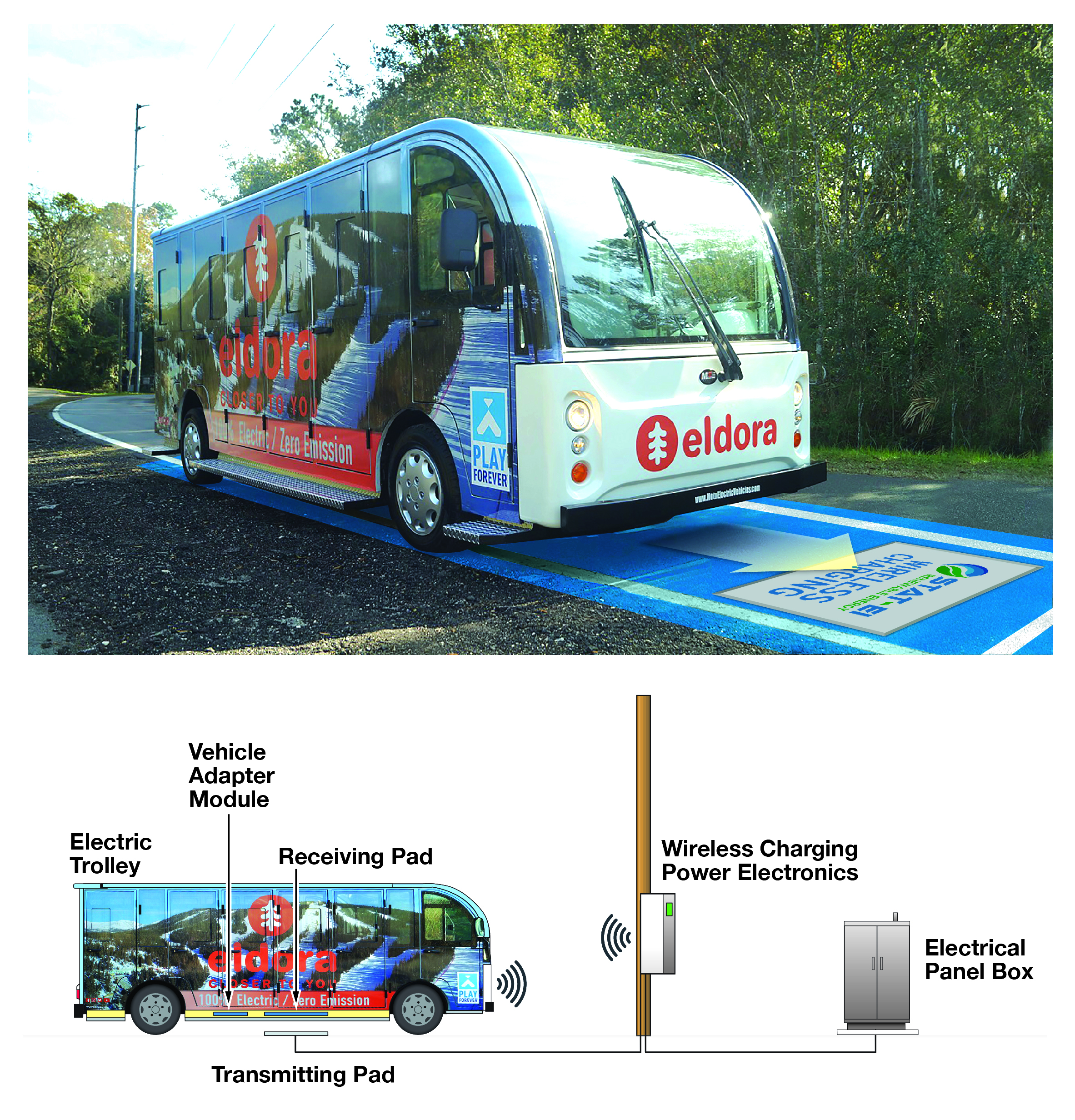
EV-ELECTRIC VEHICLE TECHNOLOGIES
EV-ELECTRIC VEHICLE TECHNOLOGIES
STAT-EI offers static and dynamic solutions to transfer energy to any electronic vehicle without having to plug-in.
STAT-EI’s Static WPT is convenient and secure to charge your car while you are parked. Our Static WPT architecture increases charging efficiency to 90+% for static and dynamic electric vehicle charging. Our architecture is simpler, cheaper, and uses more durable components to
charge electric vehicles through induction to mitigate the challenges of the current “plug-in”
systems.
Our Dynamic WPT is based on inductive power transfer (IPT) to charge electric vehicles while they are in motion. The application of this technology on public roads will eliminate the largest barrier to electric vehicle adoption—range anxiety—or the fear of running out of energy during long trips. The dynamic solution allows for charging ‘on the go” and eliminates “range anxiety”.
Once aligned, the system can transfer up to a maximum charging level (level 3) with a coupling efficiency of 92%.

STAT-EI’s charging technology is bidirectional, so vehicles can also be mobile batteries in ever larger networks of sizable batteries, and can shore up grid during emergencies.
STAT-EI’s ELECTRIC VEHICLE SOLUTIONS MITIGATE ALL CURRENT CONCERNS
Concerns
Traditional Methods
STAT-EI’s Solutions
Charging
Electric vehicle charging requires plugging in. Often electric vehicle owners do not feel safe leaving their vehicles in public plug-in locations.
Additionally, electric vehicle drivers have to remember to charge their electric vehicles or find a charging station which are not as common gas stations.
Charging becomes extremely convenient for the user. Dynamic infrastructure makes
charging easy and convenient and eliminates charging stations/stops.
Batteries
Low mile per battery charge creates charge range anxiety. Battery swapping wastes money, can cause safety issues for maintenance teams, and is wasteful.
Dynamic charging allows for smaller, lighter batteries which decreases vehicle
weight/cost, increases effective range, electric vehicle safety, and automatically adjusts for battery health.
Safety
Charging cables are bulky, inconvenient, may cause electric shock, and are
susceptible to wear.
Wireless Power Transfer eliminates internal and external cables.
Maintenance
Electric vehicle fleet managers have to track of electric vehicle charge status.
Tracking the charges of an entire fleet of electric vehicle is difficult and time consuming.
Static (stationary) and dynamic (in motion)
charging solutions are possible with proper infrastructure. Roadway solutions can charge at highway speeds. Fleet operators can adjust charging time(s) to manage costs or to adjust to fleet deployment
parameters.
In addition, STAT-EI’s charging solution contains fewer parts – and has higher reliability than
other proposed solutions – critical to transportation applications.
STAT-EI offers static and dynamic solutions to transfer energy to any electronic vehicle without having to plug-in.
STAT-EI’s Static WPT is convenient and secure to charge your car while you are parked. Our Static WPT architecture increases charging efficiency to 90+% for static and dynamic electric vehicle charging. Our architecture is simpler, cheaper, and uses more durable components to charge electric vehicles through induction to mitigate the challenges of the current “plug-in” systems.
Our Dynamic WPT is based on inductive power transfer (IPT) to charge electric vehicles while they are in motion. The application of this technology on public roads will eliminate the largest barrier to electric vehicle adoption—range anxiety—or the fear of running out of energy during long trips. The dynamic solution allows for charging ‘on the go” and eliminates “range anxiety”.
Once aligned, the system can transfer up to a maximum charging level (level 3) with a coupling efficiency of 92%.

STAT-EI’s charging technology is bidirectional, so vehicles can also be mobile batteries in ever larger networks of sizable batteries, and can shore up grid during emergencies.
STAT-EI’s ELECTRIC VEHICLE SOLUTIONS MITIGATE ALL CURRENT CONCERNS
Concerns
Traditional Methods
STAT-EI’s Solutions
Charging
Traditional methods: Electric vehicle charging requires plugging in. Often electric vehicle owners do not feel safe leaving their vehicles in public plug-in locations.
Additionally, electric vehicle drivers have to remember to charge their electric vehicles or find a charging station which are not as common gas stations.
Solutions: Charging becomes extremely convenient for the user. Dynamic infrastructure makes
charging easy and convenient and eliminates charging stations/stops.
Batteries
Traditional methods: Low mile per battery charge creates charge range anxiety. Battery swapping wastes money, can cause safety issues for maintenance teams, and is wasteful.
Solutions: Dynamic charging allows for smaller, lighter batteries which decreases vehicle
weight/cost, increases effective range, electric vehicle safety, and automatically adjusts for battery health.
Safety
Traditional methods: Charging cables are bulky, inconvenient, may cause electric shock, and are susceptible to wear.
Solutions: Wireless Power Transfer eliminates internal and external cables.
Maintenance
Traditional methods: Electric vehicle fleet managers have to track of electric vehicle charge status.
Tracking the charges of an entire fleet of electric vehicle is difficult and time consuming.
Solutions: Static (stationary) and dynamic (in motion) charging solutions are possible with proper infrastructure. Roadway solutions can charge at highway speeds. Fleet operators can adjust charging time(s) to manage costs or to adjust to fleet deployment parameters.
